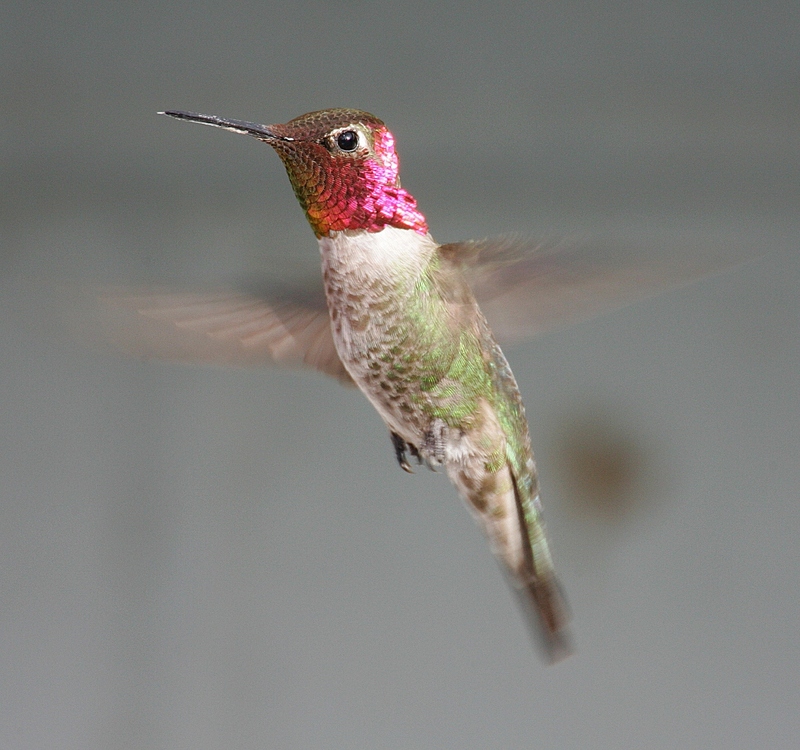|
| 질의: Small white | 결과: 1088번째/2237 | |
Anna's Hummingbird (Calypte anna) - Wiki
| 제목: | Anna's Hummingbird (Calypte anna) - Wiki
| |

| 해상도: 1092x1024
파일크기: 583139 Bytes
촬영일: 2005:04:03 00:10:46
사진기: Canon EOS-1D Mark II (Canon)
F number: f/8.0
Exposure: 1/160 sec
Focal Length: 1000/1
등록시간: 2007:09:28 22:40:55
|
Anna's Hummingbird
From Wikipedia, the free encyclopedia
[Photo] Anna's Hummingbird (Calypte anna) adult male. Mrs. Paton's feeders, Patagonia, Arizona, USA -- 2005 April. Photo by Mdf | Permission is granted to copy, distribute and/or modify this document under the terms of the GNU Free Documentation License, Version 1.2 or any later version published by the Free Software Foundation; with no Invariant Sections, no Front-Cover Texts, and no Back-Cover Texts. A copy of the license is included in the section entitled "GNU Free Documentation License". |
The Anna's Hummingbird (Calypte anna) is a medium-sized hummingbird.
These birds are glossy green on the back and grey below with green flanks. Their bill is long, straight and slender. The adult male has a glossy red crown and throat and a dark tail. Anna's is the only hummingbird species with a red crown. Females and juveniles have a green crown, a grey throat with some red marking, and a dark tail with white tips.
Their breeding habitat is open wooded or shrubby areas and mountain meadows along the Pacific coast from British Columbia to Arizona. The female builds a large cup nest in a shrub or tree, sometimes in vines or on wires. The nest is round and about 1 1/2 to 2" in diameter. The nest is built of very small twigs, lichen and other mosses, and often lined with downy feathers or animal hair. The nest materials are bound together with spider silk or other sticky materials. They are known to nest early as mid-December and as late as June.
These birds are permanent residents in parts of their range. Some birds may wander north to southern Alaska, south to Mexico or move east from California after nesting season. Some individuals have been banded as far east as Alabama and Florida.
These birds feed on nectar from flowers using a long extendable tongue or catch insects on the wing. While collecting nectar, they also assist in plant pollination. They sometimes eat tree sap.
Unlike most hummingbirds, this bird sings during courtship. They are very territorial.
This bird was named after Anna Massena, Duchess of Rivoli. A hybrid between this species and Allen's Hummingbird has been described as Floresi's Hummingbird, "Selasphorus" floresii (Ridgway, 1909; Taylor, 1909); the hybrid with the Black-chinned Hummingbird was called Trochilus violajugulum.
http://en.wikipedia.org/wiki/Anna's_Hummingbird
| The text in this page is based on the copyrighted Wikipedia article shown in above URL. It is used under the GNU Free Documentation License. You may redistribute it, verbatim or modified, providing that you comply with the terms of the GFDL. |
|
^o^
동물그림창고 똑똑전화 누리집
^o^
|
|

